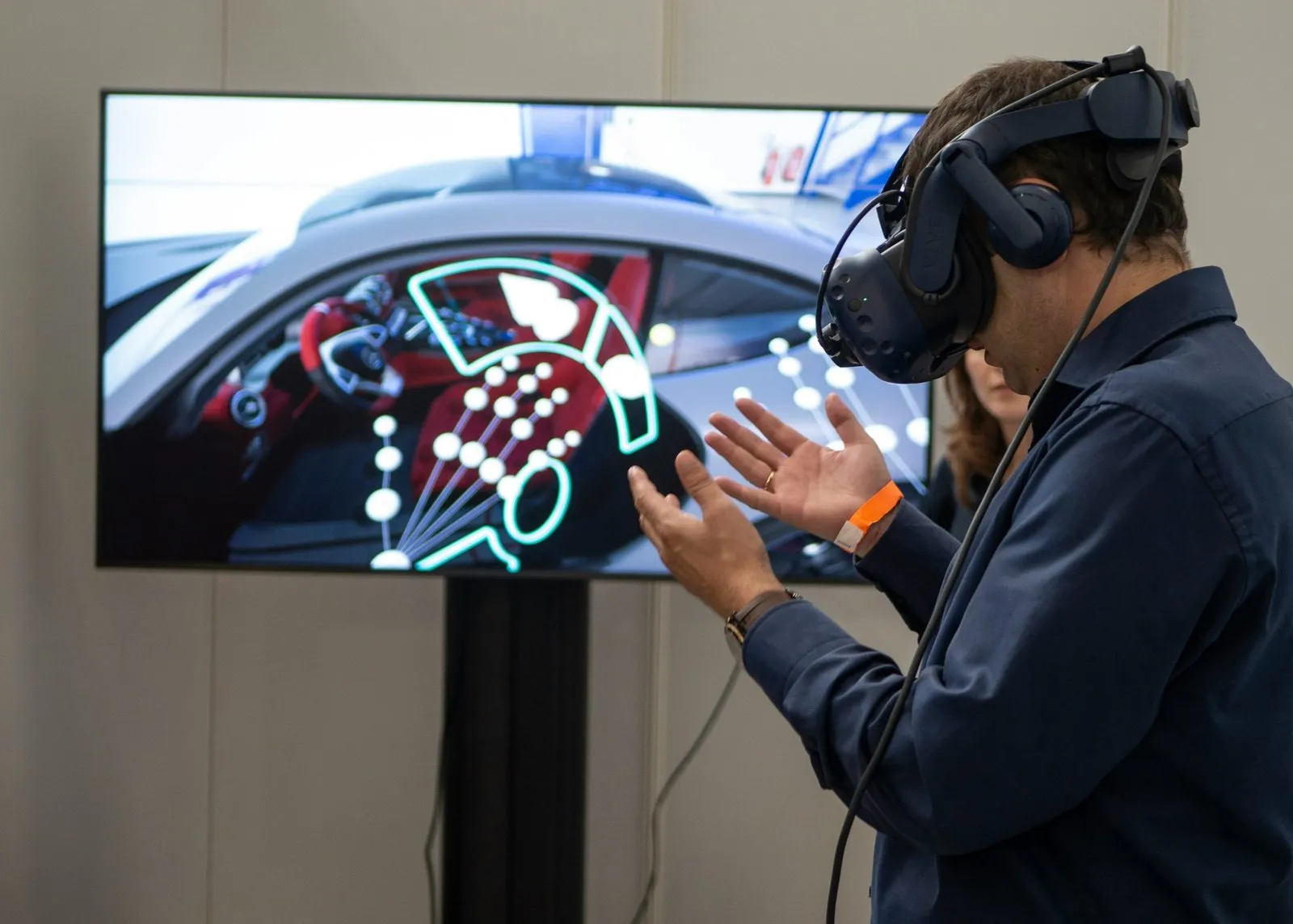
Introduction to Augmented Reality Wearables
Augmented reality (AR) represents a groundbreaking technological advancement that blends the physical world with digital overlays, enhancing the user’s perception of their environment. Unlike virtual reality (VR), which creates an entirely immersive digital experience, AR enriches the real world with computer-generated information. This distinction positions AR as a tool for supplemental engagement rather than total immersion, facilitating interactive experiences in a familiar context.
The evolution of AR technology has been marked by significant milestones, from early applications in gaming and entertainment to sophisticated usages in education, healthcare, and navigation. Over the years, this progression has led to the development of various AR wearables, which include smart glasses, heads-up displays, and interactive headsets. These devices empower users to interact with virtual elements seamlessly integrated into their visual perception, thereby fostering enhanced understanding and engagement with surrounding information.
Current trends in augmented reality wearables reflect a growing integration of AR capabilities into everyday gadgets. Devices like smart glasses have gained traction, offering features such as real-time navigation prompts, translation of foreign languages, and data analysis, all viewed directly within the user’s line of sight. This technological proliferation is influencing various sectors, particularly in enhancing productivity and learning experiences.
The potential impacts of augmented reality wearables on daily life are expansive. As these devices become more mainstream, individuals can expect to benefit from improved efficiency in tasks ranging from professional applications to personal activities. Moreover, advancements in AR technology will likely lead to innovative use cases that can further transform the way people interact with their environments. Overall, the future of AR wearables promises to significantly enhance human experience through its continuous evolution and application.
Practical Applications of AR Wearables
Augmented reality (AR) wearables have introduced innovative solutions across various domains, significantly enhancing everyday activities. One notable application lies in navigation, where devices like smart glasses overlay directional prompts onto real-world environments. These prompts assist users in finding their way through unfamiliar locations, thereby increasing efficiency and confidence. For instance, AR navigation apps can display turn-by-turn directions directly in a user’s line of sight, eliminating the need to frequently check a smartphone screen.
In the realm of education, AR wearables facilitate immersive learning experiences, transforming the traditional classroom into an interactive environment. Students can engage with 3D models through AR devices, allowing complex subjects like biology or physics to be visualized in an engaging manner. Case studies show that educational institutions adopting such technology have reported improved student retention and enthusiasm for learning, bridging gaps between theoretical concepts and practical applications.
Healthcare is another domain revolutionized by AR wearables. Surgeons can utilize AR overlays during procedures, providing real-time data about the patient’s anatomy without detracting from the surgical field. This technology enhances the precision of operations and minimizes the associated risks. Additionally, AR tools can aid in medical training, allowing aspiring healthcare professionals to practice in simulated environments that replicate real-life scenarios, thereby reinforcing their skills and confidence.
Lastly, entertainment has seen a tremendous uplift from AR wearables, creating immersive gaming experiences that blend digital elements with physical spaces. Platforms such as Pokémon GO illustrate how users can engage with their surroundings in new ways, stimulating both physical activity and social interaction. These examples demonstrate the multifaceted applications of AR wearables, showcasing their potential to transform everyday life by enhancing productivity, learning, and user experiences across diverse fields.
Challenges and Considerations
The integration of augmented reality (AR) wearables into daily life presents several challenges that must be addressed for widespread adoption. One of the most pressing issues is privacy concerns. AR devices often require access to a multitude of data, including location, personal photos, and even conversations. This raises ethical questions about user consent and the potential misuse of sensitive information. Ensuring robust data security measures is essential to build trust among users, as any breach can lead to severe consequences.
Another significant consideration is user fatigue. Prolonged usage of AR wearables can lead to discomfort or tiredness, particularly when the devices are not ergonomically designed. Developers must focus on creating lightweight and comfortable hardware to mitigate these issues. Additionally, the experiences offered by AR must be engaging enough to keep users interested, otherwise, the technology risks becoming underutilized and fading into obscurity.
The need for a robust infrastructure is also a vital factor. For AR applications to function smoothly, high-speed internet connectivity and powerful processing capabilities must be available. Without adequate support, users may experience lagging, which can detract from the overall experience. Furthermore, the integration of AR with existing devices poses another hurdle; compatibility with smartphones and other gadgets needs to be seamless to facilitate user experience.
Battery life is another critical technological barrier. AR wearables must offer extended usage times to avoid device interruption, which could otherwise lead to user frustration. Balancing functionality with energy efficiency remains a challenge for developers. To maximize the potential of augmented reality wearables, it is crucial to navigate these complex considerations effectively, addressing both ethical implications and practical usability to enhance adoption and user satisfaction.
The Future of Augmented Reality Wearables
The landscape of augmented reality (AR) wearables is poised for substantial transformation in the coming years, propelled by ongoing advancements in technology. One of the most pivotal trends is the integration of artificial intelligence (AI) alongside AR. This convergence promises to enhance user interfaces, enabling more intuitive interactions. As AR devices become increasingly capable of understanding and predicting user behavior through AI algorithms, we can expect faster and more personalized experiences. For instance, wearable AR devices might soon offer real-time language translation or contextual information based on the user’s surroundings, profoundly improving communication and navigation.
Moreover, advancements in hardware capabilities will play a crucial role in the future of AR wearables. As manufacturers explore lighter materials and improved battery life, consumers will benefit from more comfortable devices that offer extended use without frequent recharges. Enhanced display technologies, such as microLED, are anticipated to deliver superior resolution and brightness, making AR visuals more immersive and realistic. The development of more powerful processors will also facilitate the execution of complex AR applications, enabling smoother experiences that blend digital content seamlessly with the real world.
The rise of 5G technology is yet another critical factor that will influence the future of augmented reality wearables. With the enhanced connectivity offered by 5G, users can expect dramatically reduced latency, permitting real-time data streaming essential for AR applications. This connectivity opens doors for innovative use cases, such as remote collaboration, where multiple users can interact with the same virtual environment in real-time, regardless of their physical locations. Additionally, industries such as healthcare and education could leverage these advancements for training simulations and patient management, highlighting the transformative effects of AR wearables across various sectors.

